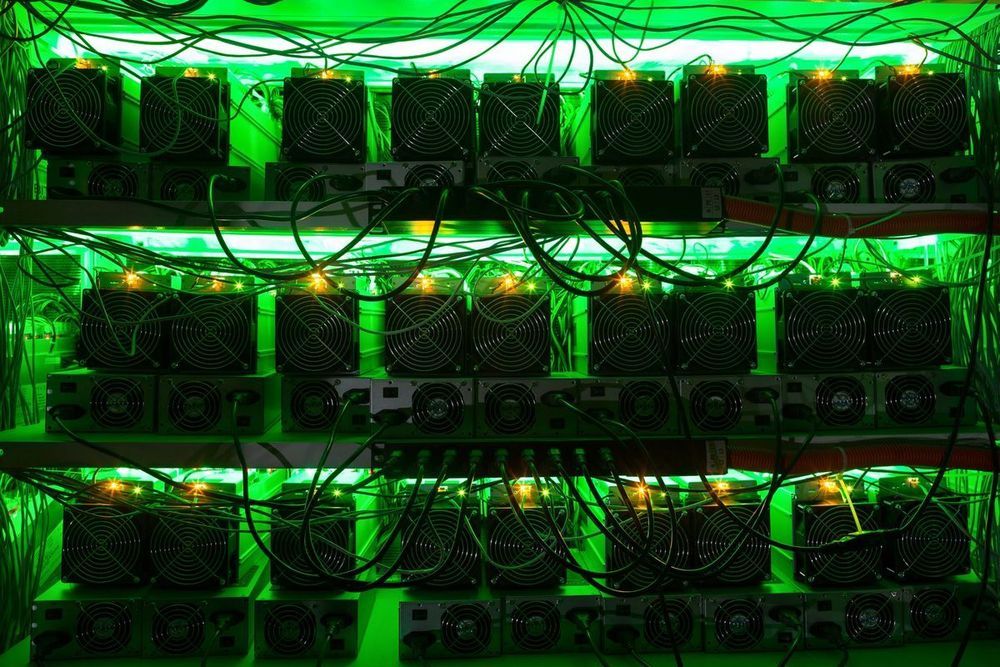Governments consider regulation as the popularity of investing in cryptocurrencies grow.




“Considering the whole industry is still in its preliminary stage, BSN has a long way to go,” Liu said. “It’s expensive to build a blockchain. Different platforms have different structures. Data are not interchangeable. Relevant projects are hard to promote. These problems have yet to be addressed by BSN.”
Last year was a big year for blockchain projects in China after President Xi Jinping called for further development of the technology at the end of 2019, but the country continues to shun cryptocurrencies like bitcoin.
Cryptocurrency and direct democracy.
SpaceX recently sparked controversy after stating it would not recognise international law in outer space.

Recording artist Akon has big plans for his upcoming smart city in Senegal. The new $6 billion development is called Akon City and will fulfill the star’s wish to provide a refuge for members of the African Diaspora both near and far. In addition to the 2000-acre resort, condos, and stadium, the metropolis is also planned to run on renewable energy and mainly use Akoin—the singer’s own cryptocurrency. After two years of planning and development, Akon has announced that they are breaking ground in 2021.
Akon believes that Africa, and his home of Senegal especially, is long overdue for economic investment. He is calling the forthcoming locale a “real-life Wakanda” and plans for it include a tech hub and “Senewood” to develop the film industry. Imagery by Bakri & Associates visualizes the unusual and futuristic forms that define the development and complement Akon’s forward-thinking choices.
This massive construction undertaking is geared towards stimulating the local economy and creating jobs for local workers. Many have praised this and are excited for the prospect of Akon City. But there are also some skeptics. Papa Massama Thiaw, a councilor and president of the youth commission for Ngueniene, shared that though many community members are optimistic, there is a lot of uncertainty. “The studies that were done were not in collaboration with the commune of Ngueniene,” he says. He also fears that jobs won’t be equally distributed. “I don’t want us to be just day laborers. We have to be among the managers.”


Steve Wozniak’s blockchain venture Efforce has listed its cryptocurrency token on the HBTC exchange.
What Happened: Efforce listed the token under the symbol WOZX on Dec. 3. It reached “$950M in the first 13 minutes, 10 times the listing price,” according to a company press release.
The company says investors have given it a valuation of $80 million valuation in private sales.

Fraudsters redirected email and web traffic destined for several cryptocurrency trading platforms over the past week. The attacks were facilitated by scams targeting employees at GoDaddy, the world’s largest domain name registrar, KrebsOnSecurity has learned.
The incident is the latest incursion at GoDaddy that relied on tricking employees into transferring ownership and/or control over targeted domains to fraudsters. In March, a voice phishing scam targeting GoDaddy support employees allowed attackers to assume control over at least a half-dozen domain names, including transaction brokering site escrow.com.

While there’s no launch date yet, the People’s Bank of China is likely to be the first major central bank to issue a digital version of its currency, the yuan, seeking to keep up with — and control of — a rapidly digitizing economy. Trials have been held this year in a handful of cities and tests have started with some e-wallets and online apps, with the Covid-19 pandemic and need for social distancing providing a new sense of urgency. Unlike cryptocurrencies such as Bitcoin, dealing in the digital yuan won’t have any presumption of anonymity, and its value will be as stable as the physical yuan, which will be sticking around too. Behind China’s rush is a desire to manage technological change on its own terms. As one PBOC official put it, currency isn’t only an economic issue, it’s also about sovereignty.
Not all the details are out, but according to new patents registered by the PBOC and official speeches, it could work something like this: Consumers and businesses would download a digital wallet onto their mobile phone and fill it with money from their account at a commercial bank — similar to going to an ATM. They then use that money — dubbed Digital Currency Electronic Payment, or DCEP — like cash to make and receive payments directly with anyone else who also has a digital wallet. Some questions remain, including the impact on Big Tech companies such as Ant Group Co. and Tencent Holdings Ltd. that already offer payment services.

Akon has released detailed plans of Akon City, his $6 billion futuristic cryptocurrency city, which he calls a “real-life Wakanda,” referring to the hit movie Black Panther. There will be seven major districts, and the city will be run on the akoin cryptocurrency.
Senegalese-American star and philanthropist Akon, whose full name is Aliaune Damala Badara Akon Thiam, unveiled Monday some major details of his planned Akon City. The $6 billion futuristic city in Senegal, Africa, will be run on the akoin cryptocurrency.
The city will be divided into seven major districts: the African culture village district, the offices and residential district, the entertainment district, the health and safety district, the education district, the technology district, and the Senewood district.